Key in a search term below to search our website.
Key in a search term below to search our website.
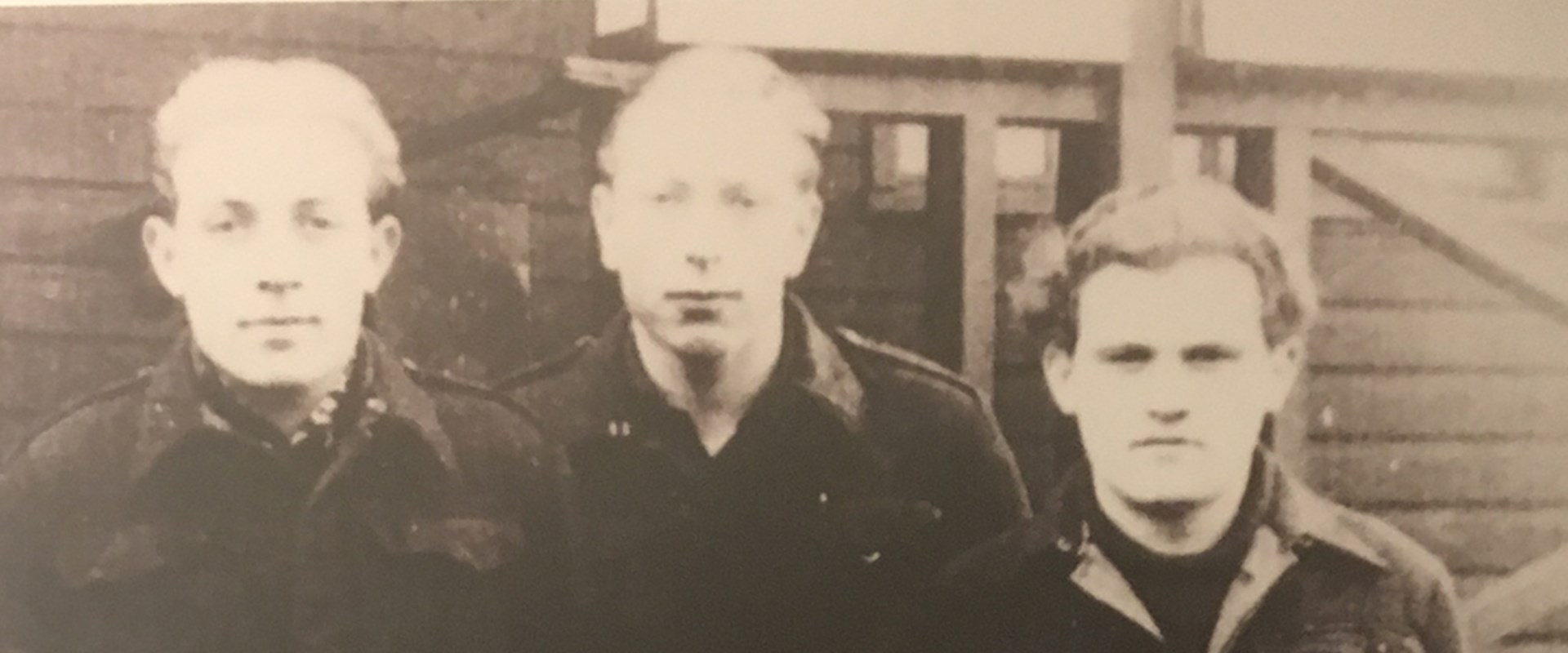
During and directly after the Second World War, the Reid family at Wester Kittochside, East Kilbride employed both Italian and German prisoners of war (POW). One of these was Heinrich Lückel, who was born in Germany in October 1927. After leaving school he worked on the family farm but had to join the army in November 1944, when he turned seventeen.
Heinrich had only been on the front line for three days when he was captured by the US army in Siegen, Germany. From there the POWs were shipped to Cherbourg, France and then to New York and all through the States and onto the Panama Canal. They then travelled to Liverpool, where they were handed over to the British Army.
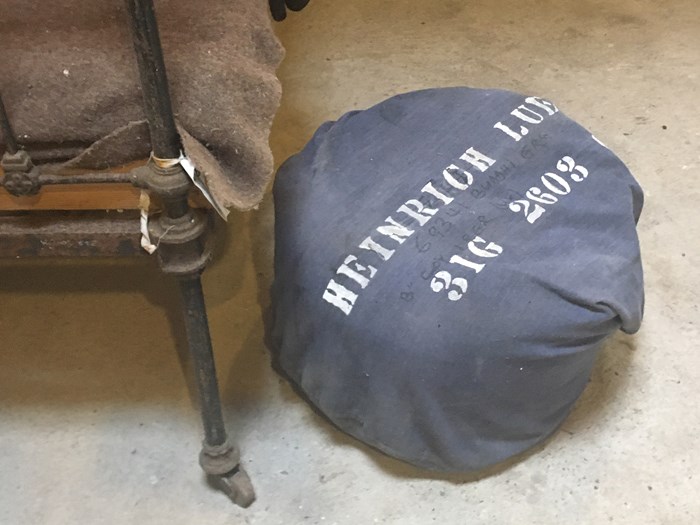
Heinrich Lückel's POW bag in the Bothy at Wester Kittochside.
Heinrich arrived at the East Kilbride POW camp in the spring of 1946. With approximately eight other German prisoners he was sent out to farms in the area and began working full-time at Wester Kittochside in April 1946. At first he walked or cycled daily between the farm and the camp, but by the autumn of 1946 he was staying in the bothy next to the farmhouse.
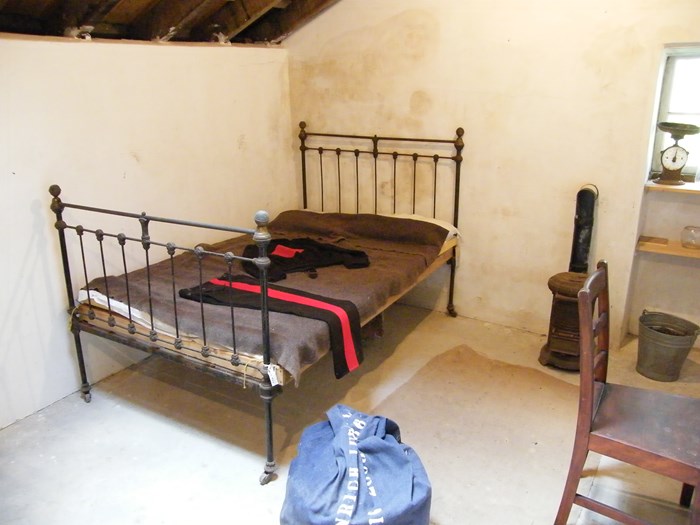
View of the bed in the Bothy at Wester Kittochide where the POWs slept.
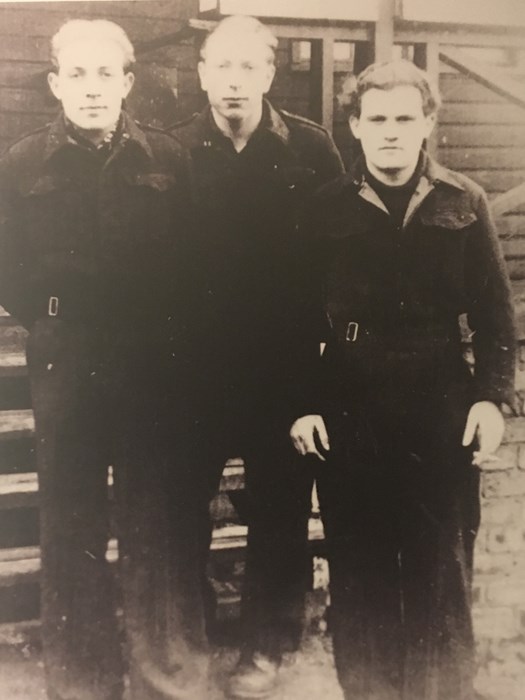
Heinrich Luckel centre with two fellow POWs c. 1947.
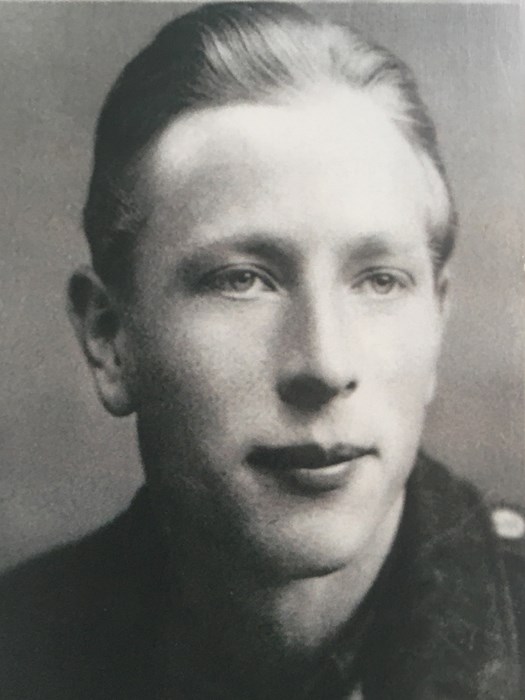
Heinrich Lückel as a POW.
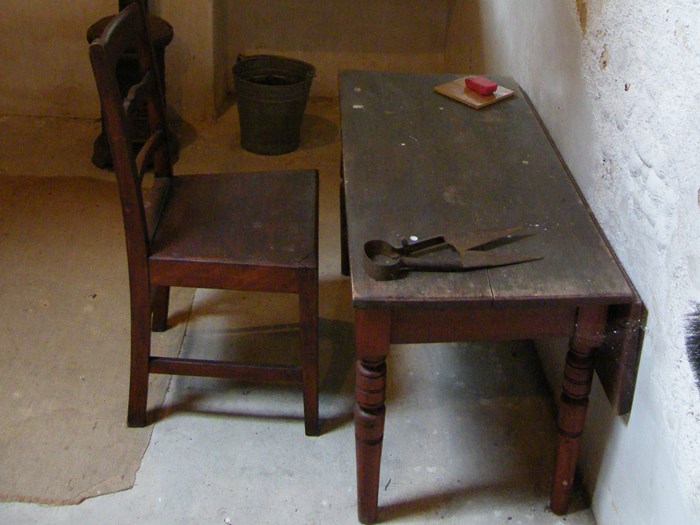
Desk and chair that would have been used by the POWs in the Bothy at Wester Kittochside.
Later, Heinrich was joined by a second POW, Walter. They both lived in the bothy but took their meals with James Reid and the housekeeper at the farmhouse. Both were farmers' sons and so were well suited to the work at Wester Kittochside. Walter was released in September 1947 and replaced by Werner Rockstroh, from the main prison camp.
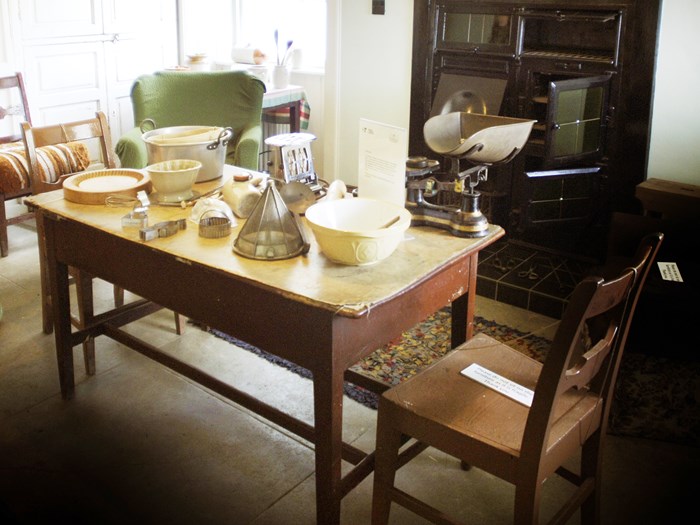
Farmhouse kitchen at Wester Kittochside where the prisoners ate their meals with James Reid.
Living at the farm instead of the camp afforded Heinrich more freedom. He worked six days a week, from 06:30 to 17:30 each day. On Sundays, apart from an hour or so in the morning and evening, his time was his own. James Reid gave him permission to go almost wherever he wished and he often went to the cinema in Glasgow, and spent time reading British newspapers and writing letters.
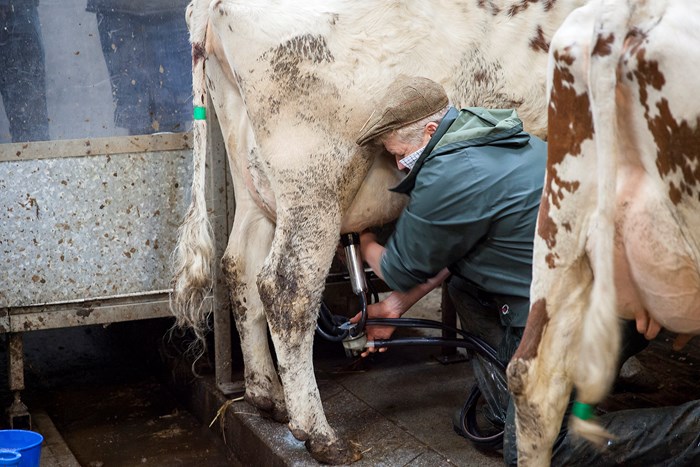
Heinrich was released in April 1948 and Werner two months later. James Reid kept in touch with the POWs for many years. Heinrich visited Scotland years later and members of the Reid family visited Heinrich's family in Germany. Heinrich was last in Scotland in July 2001, when he attended the opening of the National Museum of Rural Life.
Heinrich recalls James Reid having about 36 dairy cows at this time and just as many young cattle. Although a milking machine was in place, Heinrich remembers James and his farmhands milking by hand. About 300-360 litres of milk was produced each day and cooled with water immediately. The milk was picked up by truck daily.
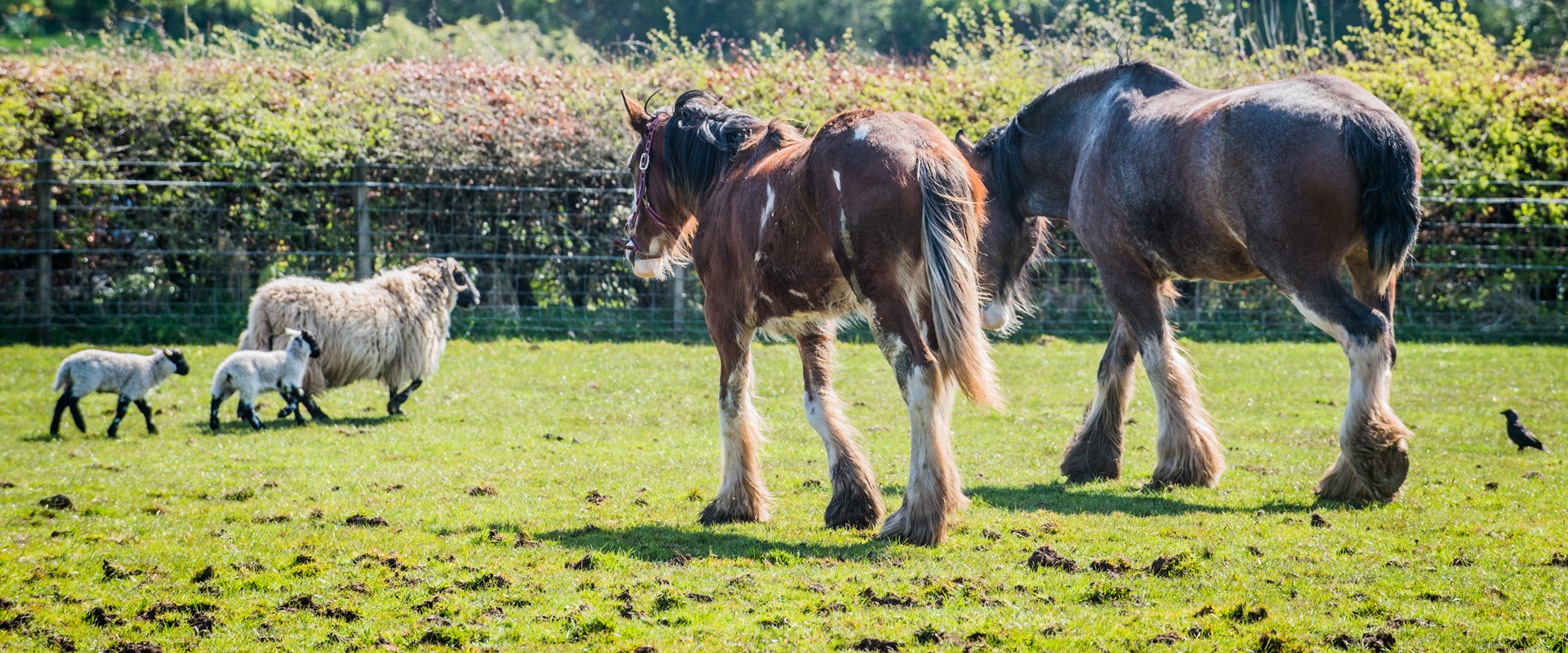
Clydesdale horses and black-faced sheep on the present day farm.
Heinrich also remembers there being two horses on the farm, Archie and Daisy, and two henhouses containing approximately 80 hens. At this time there were usually about ten acres of grass, four to six of oats, a few potatoes and the rest for turnips. A Fordson tractor was used on the farm and James Reid drove an old Vauxhall car.
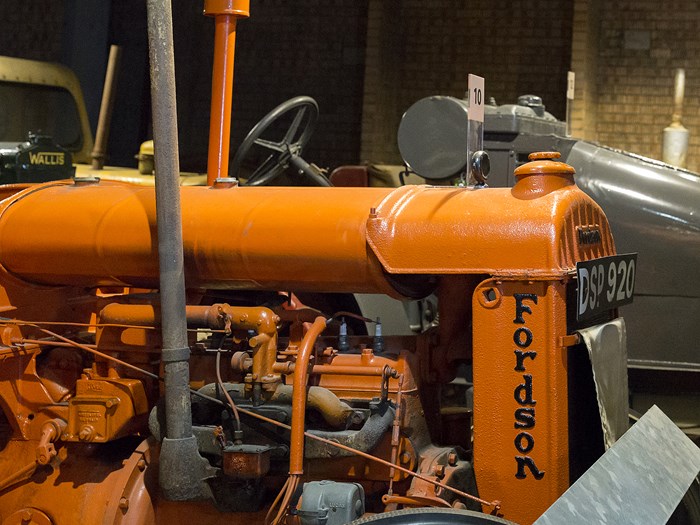
An early 20th-century Fordson tractor on display at National Museum of Rural Life, of a type that may have been on the 1940s Wester Kittochside farm.
Today Wester Kittochside farm is part of the National Museum of Rural Life. It is home to Ayrshire, Aberdeen Angus and Highland cattle, Tamworth pigs, sheep, hens and Clydesdale horses. The farm is run in the style of a 1950s dairy farm, and the rooms of the Georgian farmhouse are decorated as they would have been in the 1950s.
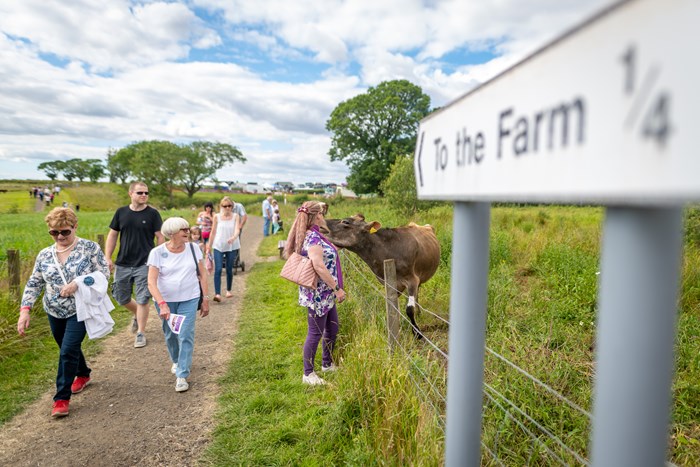
Large areas of the farm remain uncultivated, in order to encourage and improve the already diverse habitats and species of flora and fauna.
Find out more about the 500 years of the Reid family at Wester Kittochside here.